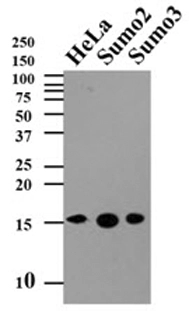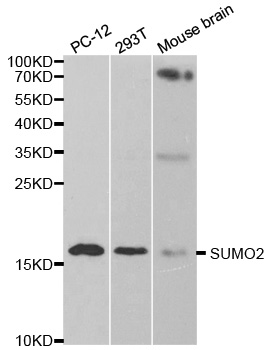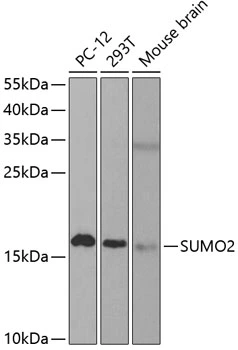
WB analysis of various sample lysates using GTX54705 SUMO2 antibody. Dilution : 1:1000 Loading : 25microg per lane
SUMO2 antibody
GTX54705
ApplicationsImmunoFluorescence, Western Blot, ImmunoCytoChemistry
Product group Antibodies
TargetSUMO2
Overview
- SupplierGeneTex
- Product NameSUMO2 antibody
- Delivery Days Customer7
- Application Supplier NoteWB: 1:500 - 1:2000. ICC/IF: 1:50 - 1:200. *Optimal dilutions/concentrations should be determined by the researcher.Not tested in other applications.
- ApplicationsImmunoFluorescence, Western Blot, ImmunoCytoChemistry
- CertificationResearch Use Only
- ClonalityPolyclonal
- ConjugateUnconjugated
- Gene ID6613
- Target nameSUMO2
- Target descriptionsmall ubiquitin like modifier 2
- Target synonymsHSMT3, SMT3B, SMT3H2, SUMO3, Smt3A, small ubiquitin-related modifier 2, SMT3 homolog 2, SMT3 suppressor of mif two 3 homolog 2, sentrin 2, ubiquitin-like protein SMT3A, ubiquitin-like protein SMT3B
- HostRabbit
- IsotypeIgG
- Protein IDP61956
- Protein NameSmall ubiquitin-related modifier 2
- Scientific DescriptionThis gene encodes a protein that is a member of the SUMO (small ubiquitin-like modifier) protein family. It functions in a manner similar to ubiquitin in that it is bound to target proteins as part of a post-translational modification system. However, unlike ubiquitin which targets proteins for degradation, this protein is involved in a variety of cellular processes, such as nuclear transport, transcriptional regulation, apoptosis, and protein stability. It is not active until the last two amino acids of the carboxy-terminus have been cleaved off. Numerous pseudogenes have been reported for this gene. Alternate transcriptional splice variants, encoding different isoforms, have been characterized. [provided by RefSeq, Jul 2008]
- Storage Instruction-20°C or -80°C,2°C to 8°C
- UNSPSC12352203
References
- Zhang J, Tao J, Ling Y, et al. Switch of NAD Salvage to de novo Biosynthesis Sustains SIRT1-RelB-Dependent Inflammatory Tolerance. Front Immunol. 2019,10:2358. doi: 10.3389/fimmu.2019.02358Read this paper

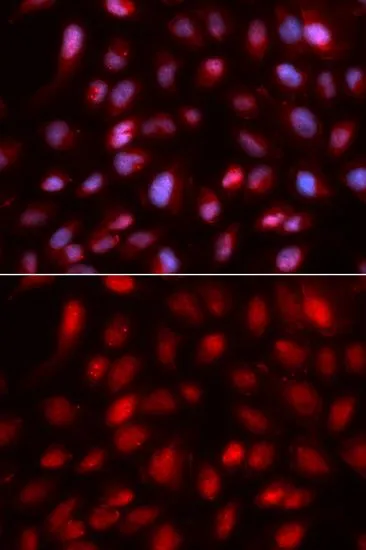
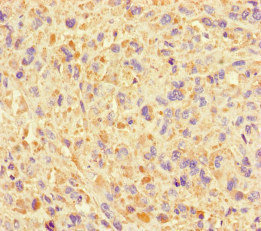
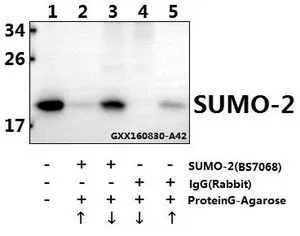
![IHC-P analysis of human testicular carcinoma tissue using GTX35095 SUMO2 antibody [SUMO2/1199].](https://www.genetex.com/upload/website/prouct_img/normal/GTX35095/GTX35095_20200115_IHC-P_1212_w_23060801_954.webp)
![IHC-P analysis of human tonsil tissue using GTX35096 SUMO2 antibody [SPM621].](https://www.genetex.com/upload/website/prouct_img/normal/GTX35096/GTX35096_20200115_IHC-P_1410_w_23060801_199.webp)
